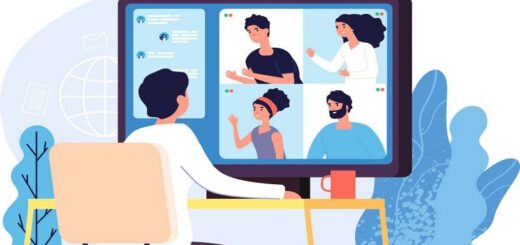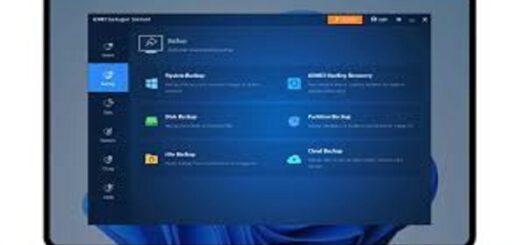Future of Remote Work: How Remote Work is Transforming Employee Development and Training?
Remote work has revolutionized the way groups method employee improvement and training. As groups adapt to a more bendy work surroundings, they’re discovering modern methods to beautify ability-constructing and professional boom. This transformation not best addresses the challenges of faraway work but additionally leverages its blessings to create a greater inclusive and effective education landscape. In this weblog publish, we will explore how far flung work is reshaping employee improvement, the equipment and strategies being employed, and the destiny implications for the body of workers schooling.
What Is Remote Work?
Telecommuting is applicable to basically any type of work, including calls centers, finance and accounting, writing and graphic designing and many more. Regarding the specific work that is performed in a remote job, it will be different depending on the nature of the job and the company’s needs.
What Does Remote Work Mean?
Every employee and employer must understand the meaning of remote work before plunging right into learning its advantages. Remote work commonly referred to as telecommuting or Working from home is an employee’s arrangement to perform his/her job at a location that is not the traditional workplace. This could be their home, the café, or any other place that one feels comfortable as long as there is internet connection.
What Is the Remote Way of Working?
Employees who work from home should employ certain tools to interact with others in the company. This could be through apps such as Skype, WhatsApp, Asana, mail, Trello and google drive among others that are employed in the organization.
What Can Be Considered as a Remote Job?
A remote job is a type of job that means the employee can exercise his or her profession in a place not a regular workplace. It is also commonly known as a telecommuting job or a work from home job since it is done from within the comfort of one’s home. Work from home has also gained a lot of traction because it gives employees the opportunity to work from anywhere and within their own convenient time.
What is the impact of remote workers?
Remote employees have had a widespread effect on the global personnel. Some of the key advantages of far off work consist of:
- Increased flexibility: Remote employees can often have more flexible schedules and work-life stability.
- Reduced costs: Companies can keep on office area, utilities, and commuting fees.
- Improved productiveness: Studies have shown that far off employees may be simply as productive, if not more so, than their in-office counterparts.
- Access to a much wider talent pool: Companies can lease employees from anywhere within the world, increasing their right of entry to talent.
How Does Training Work for a Remote Job?
Education for remote work implies using such tools as online material, webinars, and self-study.
Here are some common methods:
- Online Courses and Modules: Workers are able to go through various lessons and training materials so as to acquire new competencies as well as update previously acquired ones. They are available online often in platforms such as Coursera, Udemy or in learning management systems provided by the company.
- Virtual Workshops and Webinars: Webinars can easily be conducted through applications such as Zoom, Microsoft Teams or any other which allows live group interaction. These sessions are live teaching sessions as well as interactive discussion and question and answer sessions.
- Asynchronous Learning: This involves doing training activities that may include completion of training materials at one’s own tempo. It can be from reading articles, going through videos or even doing a set assignment. This is advantageous to the employees because it is a flexible approach and training can be taken at one’s own time.
Additional Details
- Paid Training Programs: It’s common with so many companies to provide paid training for remote jobs. For instance, firms such as Concentrix undertake paid courses on how to respond to customers’ inquiries and other concerns.
- Some of the benefits include; This way, the employees are fully oriented before joining the company or starting their new positions.
- Certification Courses: The following are some advantages of getting certifications especially when it comes to working remotely: The degrees that can be earned in project management, digital marketing , or IT can improve the chances of a job candidate in the market.
- On-the-Job Training: Some organizations offer the training at the workplace where the employees learn by practice. This may involve following around staff, working on live projects and even getting feedback from supervisors.
Flexibility is one of the major reasons behind remote training so the employer can ensure that their employees can improve their performance no matter where they are.
How was training impacted by remote working?
Because of remote working, training was disrupted and most of the training went online. organizations utilized virtual workshops, webinars, and other forms of learning that did not require face-to-face interaction to maintain an ongoing level of upskilling. This had its merit insomuch as it rendered the new environment more flexible, yet at the same time the employees became more on their own in terms of learning self-discipline. As such it has been realized that, to adapt to the new normal of working remotely, there are certain adjustments that have to be made when it comes to training.
Key impacts include:
- Increased reliance on technology: Today, Virtual training aid and tools have emerged as key solutions to providing the necessary support in carrying out training needs.
- Adapting to asynchronous learning: Corresponding to this, it has become necessary to develop training programs that may enable learners to train at different times or from different locations.
- Focus on communication and collaboration: The interaction of the teacher with the learners should be clear since learners may not get a chance to have physical contact with the trainer.
How do you conduct training remotely?
To conduct training remotely, you can use a variety of tools and strategies, such as:
- Video conferencing platforms: Zoom, Microsoft Teams, and Google Meet platforms are the most used platforms for conducting virtual workshops and meetings.
- Online learning management systems (LMS): Tools such as moodle, blackboard, canvas are some of the common LMS software that can be used in delivery of online courses or modules.
- Asynchronous learning tools: Media sharing Applications like Google drive, Dropbox and Trello are useful in sharing documents, assignments and feedback.
What are the implications of virtual work arrangements for training?
With virtual work arrangements, training has also become easier because it can be arranged anyway in any specific manner through distances learning to accord with the pace of the learner. However, it also necessitates that firms implement sound e-learning technologies and platforms so that training can be delivered andable Objectively. In addition, new trainees were required to have more self discipline to continue training on their own.
Virtual work arrangements have both benefits and challenges for training:
Benefits:
- Increased flexibility and accessibility
- Reduced costs
- The ability to a large number of people.
Challenges:
There are very few chances for people to actually communicate with each other.
- Potential for technical difficulties
- Difficulty in maintaining engagement
In order to counter these challenges, organizations need to ensure that there is adequate training put in place which relates to the remote workers and harness the use of new technology.
The Future of Remote Work:
Flexible working has become a new paradigm in contemporary organizations leading to drastic changes in paradigm concerning the training and development of employees. Moves to digital have seen organizations utilizing technology tools and systems in the provision of learning that is often convenient and tailored. Moreover, the shift does not only widen the access to the information but also allows creating the environment for the people’s permanent improvement. Due to increased growth of remote work it has been forecasted to apply the common elements such as artificial intelligence and virtual reality to deliver fascinating and more engaging training paradigms. These innovations will create a far more fascinating and efficient process for employee development, in turn, setting the workforce for work of the future.
1. Increased Flexibility and Accessibility
- On-demand learning: Remote work means that employees can follow company-provided training at one’s own chosen pace and time.
- Geographic independence: Organizational training can also be conducted remotely meaning that no matter where the employees of an organization are stationed they can all be trained at the same time.
2. Enhanced Technology Integration
- Virtual classrooms and webinars: Technology interactive online lessons which enable one to better connect with the instructor as well as peers.
- Personalized learning paths: Self development can be taught using technology in a triangulated manner with participants able to pick their preferred method.
3. New Perspectives of Performance Management
- Continuous feedback: Adapting to closely related types of work means that issuing and receiving feedback must also change in areas like e-check-ins, e-performance reviews, and colleagues’ feedback or 360-degree feedback. Performance management software plays a crucial role in facilitating these processes, enabling real-time feedback and tracking employee progress efficiently.
- Remote performance monitoring: There are various solutions in the market that can help in monitoring the employees’ performance and also their level of engagement without even the interaction being face-to-face.
4. Challenges and Opportunities
Here are the info and guidelines for the challenges faraway paintings for education and improvement, in conjunction with the brand new records:
Isolation and Engagement
Remote paintings can cause feelings of social isolation among employees that can negatively affect engagement and productivity. Without the daily face-to-face interactions that occur in a workplace setting, employees may additionally be disconnected from their colleagues and the organization. This isolation can hinder informal getting to know possibilities, which includes peer getting to know and mentorship, which might be vital for professional improvement.
Addressing the Challenge:
- Virtual Team Building: Implementing ordinary digital team-building sports can help foster an experience of community and belonging.
- Interactive Training Sessions: Utilizing interactive factors like polls, quizzes, and breakout rooms at some stage in education classes can keep personnel engaged and make learning greater dynamic.
- Regular Check-ins: Managers have to conduct ordinary take-a look at-ins with their team participants to provide help and hold engagement.
Technical Difficulties
Remote paintings are predicated heavily on era, which could present several challenges. Issues including terrible internet connectivity, previous gadgets, and shortage of technical proficiency can disrupt training classes and hinder mastering. Additionally, the reliance on digital systems calls for each trainer and employees to be cushty with various tools and technologies.
Overcoming the Challenge:
- Technical Support: Providing robust technical support and resources to employees can help mitigate these issues. This includes offering training on how to use digital tools effectively.
- Reliable Infrastructure: Investing in reliable infrastructure and ensuring employees have access to necessary equipment can reduce technical disruptions.
- Pre-Training Preparation: Conducting pre-training sessions to familiarize employees with the tools and platforms used during training can enhance their comfort and proficiency.
Cultural Differences
In a worldwide group of workers, cultural variations can pose extensive demanding situations to powerful verbal exchange and collaboration. Different cultural norms and verbal exchange styles can cause misunderstandings and prevent the schooling technique. It’s critical to navigate these variations to make certain that education is inclusive and effective for all employees.
Navigating the Challenge:
- Cultural Sensitivity Training: Offering cultural sensitivity schooling can help employees understand and appreciate numerous views and communique styles.
- Inclusive Training Materials: Developing training materials which can be culturally inclusive and handy to all employees can decorate expertise and engagement.
- Open Communication: Encouraging open conversation and comments can help discover and cope with any cultural barriers which could rise up at some stage in training.
By addressing these challenges with thoughtful strategies, groups can create an extra effective and inclusive remote education environment.
5. The Future of Remote Work and Employee Development
The future of remote work is transforming how organizations approach employee development and training. With the rise of hybrid work models and the integration of emerging technologies like AI and VR, companies are creating more flexible, personalized, and immersive learning experiences. These advancements are shaping a more dynamic and effective workforce for the future.
-
Hybrid Work Models
“Flexibility at the workplace has become the order of the day, especially through what is today known as ‘Working from Home’ or ‘Work from Home’ or, ‘Remote Working,’ which allow employees to work onsite and offsite. ” This model is quite free and provides means for an employee to work from home for several days a week and from the office for the other days. It addresses the demand of a harmonized work-life setting, minimizes the pressure that comes along with having to commute to and from work, and increases efficiency. Some companies such as Microsoft and Google have adopted the two models given the strength of the two strategies; remote working and collaborative working. This approach also comes in handy in engaging and retaining human resources as most employees have developed an appreciation for blent working.
-
Emerging Technologies
Other rapidly developing trends, which affect employee development and training significantly are Artificial Intelligence (AI), and Virtual Reality (VR). AI makes it possible to learn at one’s own pace based on how an individual performs and therefore makes training efficient. These are environments that enable the workers to master the specific skills that they are going to apply at the workplace in real life but not a real-life environment. These technologies not only increase the level of interest in a given topic but also offer CBT as a scalable and flexible solution to the growing demand of a worldwide workforce. Thus, the continuous development of these technologies is expected to enhance employee development processes to be more engaging and effective.


